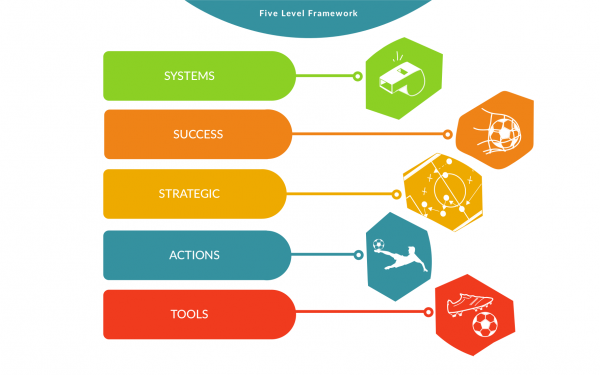Creating sustainable futures/CSF101/Understanding systems/Five level model
From WikiEducator
The Five Level Framework can be applied to any defined system to differentiate between definitions of success (usually called a ‘vision’ in strategic planning processes), strategies, actions, and tools. As an example, consider the game of football.
Football is often described as the world's simplest game. Let’s apply the Five Level Framework to the game of football as a way of exploring how the framework for sustainable development might be used for considering any strategic approach.
- The SYSTEMS level defines the boundaries of the game: the rules of the game, the pitch, its goal posts and the people involved: players, referees, coaches and other support team members etc.
- The SUCCESS level defines how to win, which is to score more goals than the other team. Simple!
- The STRATEGIES to enable success are much more complex and involve creative thinking to score goals and win. This might include set piece moves, rehearsed interplay between players, and other agreed tactics.
- The ACTIONS level is more specific and is the way the strategies go from being an idea to becoming real. Each person has a specific role to deliver the strategy, such as a the players being in certain places and the coach delivering the appropriate training regime, as well as the more operational roles such as preparing the pitch and running the touch line.
- The TOOLS level covers all the equipment, systems and processes required for the actions, and to evaluate and monitor performance. So it includes the players’ boots, nets for the goals, a stopwatch to keep time, video refereeing equipment, and the processes for gathering performance statistics like shots on goals, tackles made, possession etc.
